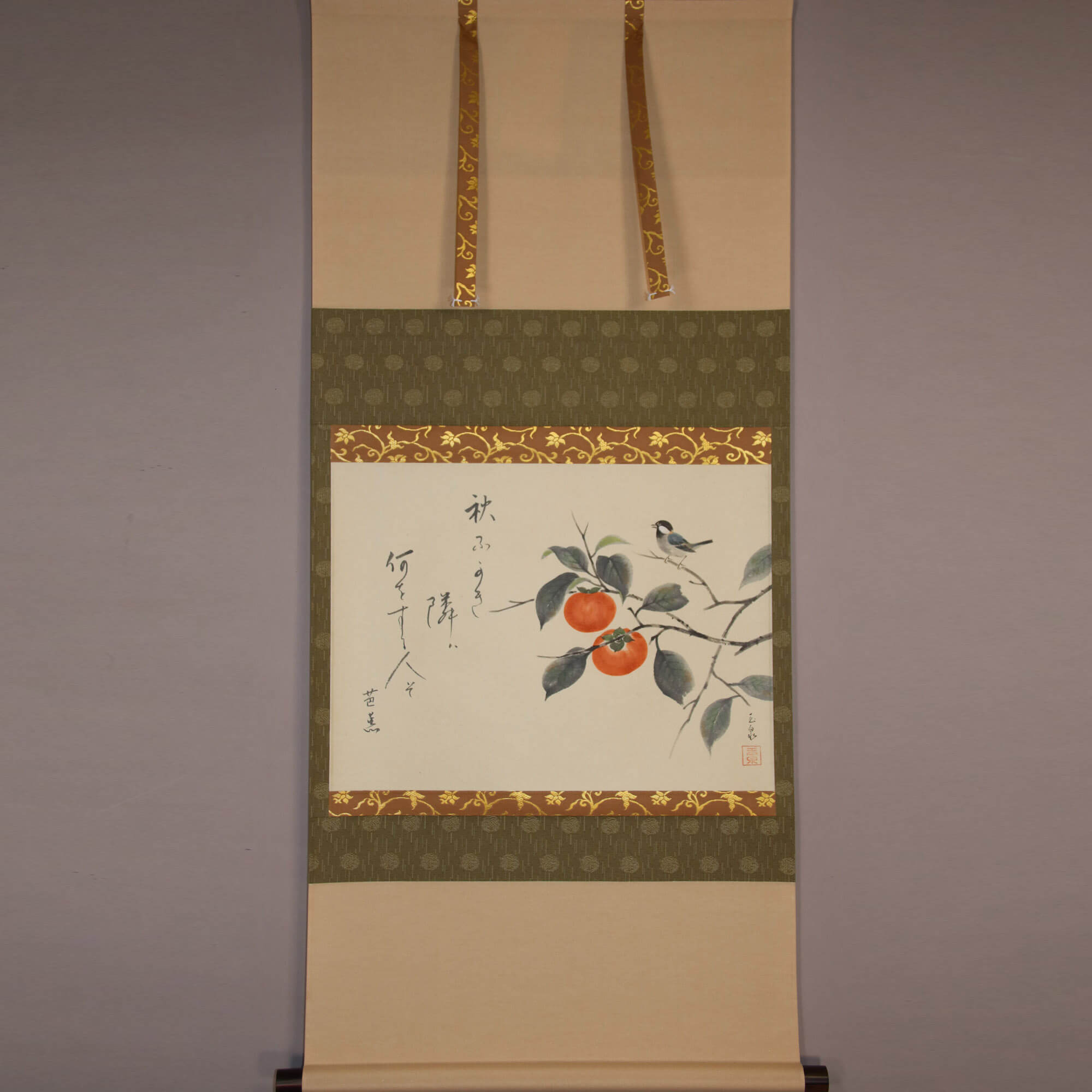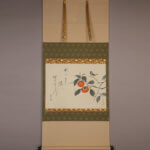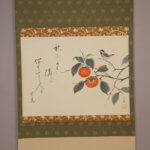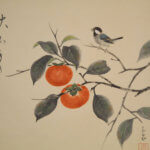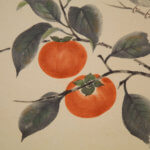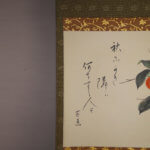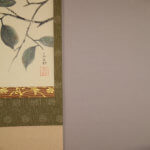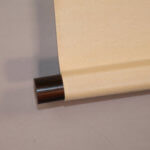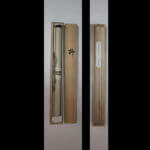Kakejiku Hanging Scroll: Persimmons / Hayashi Gyokusen - Kaki
- Product ID
- B0125
- Name
- Hayashi Gyokusen
- Profile
A Japanese-style painter. Member of the Tōyō Bijutsu-kai. A frequent prize winner. Specialized in flowers & birds paintings and landscape paintings.
- Size
- 600mm x 1210mm
- Roller End Material
Redsandalwood- Material of the Work
- Japanese paper
- Price
- JPY 35,000
- Stock Condition
- In stock
- Payment: Click the Paypal Mark
- Duty and Taxes
Import duty and taxes are beyond our control and may apply to your shipment. Please noted that these fees are the responsibility of the buyer.
- Description
Matsuo Bashō, a haiku poet in the Edo period, fell sick when he was in an acquaintance’s house in Osaka in September 1694. A haiku gathering had been planned for him, but he was unable to join it. So, he entrusted the organizer with a haiku he composed with that sad thought, and the organizer recited it at the haiku gathering. About half a month later, Matsuo Bashō died. A Japanese-style painter Hayashi Gyokusen added such a haiku by Matsuo Bashō to the painting of autumn persimmons and a chickadee. The content of the haiku is as follows.
“Autumn is deepening. I wonder what the neighbor is doing?”
This haiku expresses his lonely feelings of not being able to participate in the haiku gathering, and the loneliness that the colorful autumn leaves wither and fall as autumn deepens and winter approaches. In addition, that haiku also expresses his own loneliness for death since he realized his death is approaching.
By adding this haiku to the painting, this work changes from just an autumn work to a tasteful one that conveys various emotions. This is a masterpiece that you can fully enjoy the charm of haiga (a style of Japanese painting that incorporates painting and haiku).

